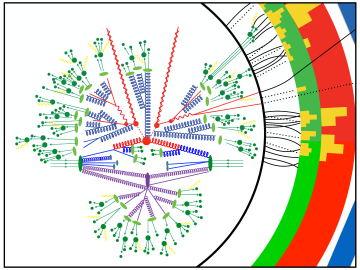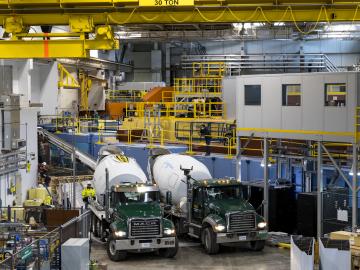
Filter News
Area of Research
- (-) Neutron Science (58)
- (-) Nuclear Science and Technology (4)
- (-) Supercomputing (63)
- Advanced Manufacturing (2)
- Biological Systems (1)
- Biology and Environment (31)
- Computational Biology (1)
- Computer Science (2)
- Energy Science (15)
- Fusion and Fission (4)
- Isotopes (18)
- Materials (28)
- Materials for Computing (5)
- National Security (13)
- Quantum information Science (1)
News Topics
- (-) Big Data (16)
- (-) Biomedical (13)
- (-) Computer Science (48)
- (-) Isotopes (3)
- (-) Neutron Science (56)
- (-) Physics (6)
- (-) Quantum Computing (11)
- (-) Space Exploration (3)
- 3-D Printing/Advanced Manufacturing (6)
- Advanced Reactors (4)
- Artificial Intelligence (23)
- Bioenergy (6)
- Biology (8)
- Biotechnology (1)
- Buildings (2)
- Chemical Sciences (2)
- Clean Water (2)
- Coronavirus (9)
- Cybersecurity (2)
- Energy Storage (3)
- Environment (18)
- Exascale Computing (16)
- Fossil Energy (1)
- Frontier (17)
- Fusion (6)
- Grid (1)
- High-Performance Computing (25)
- Hydropower (1)
- Machine Learning (10)
- Materials (9)
- Materials Science (15)
- Mathematics (2)
- Microscopy (2)
- Molten Salt (1)
- Nanotechnology (6)
- National Security (3)
- Nuclear Energy (19)
- Polymers (1)
- Quantum Science (11)
- Security (3)
- Simulation (12)
- Software (1)
- Summit (22)
- Transportation (4)
Media Contacts

Tackling the climate crisis and achieving an equitable clean energy future are among the biggest challenges of our time.

Lawrence Berkeley National Laboratory physicists Christian Bauer, Marat Freytsis and Benjamin Nachman have leveraged an IBM Q quantum computer through the Oak Ridge Leadership Computing Facility’s Quantum Computing User Program to capture part of a

A study by researchers at the ORNL takes a fresh look at what could become the first step toward a new generation of solar batteries.

Cement trucks entering and exiting the Spallation Neutron Source are a common sight as construction of the VENUS neutron imaging beamline progresses. Slated for completion and commissioning in 2024-2025, VENUS is the twentieth neutron instrument at SNS and will offer many new capabilities.

A rapidly emerging consensus in the scientific community predicts the future will be defined by humanity’s ability to exploit the laws of quantum mechanics.

To explore the inner workings of severe acute respiratory syndrome coronavirus 2, or SARS-CoV-2, researchers from ORNL developed a novel technique.

A new version of the Energy Exascale Earth System Model, or E3SM, is two times faster than an earlier version released in 2018.

The world is full of “huge, gnarly problems,” as ORNL research scientist and musician Melissa Allen-Dumas puts it — no matter what line of work you’re in. That was certainly the case when she would wrestle with a tough piece of music.

A team led by the U.S. Department of Energy’s Oak Ridge National Laboratory demonstrated the viability of a “quantum entanglement witness” capable of proving the presence of entanglement between magnetic particles, or spins, in a quantum material.

The daily traffic congestion along the streets and interstate lanes of Chattanooga could be headed the way of the horse and buggy with help from ORNL researchers.


